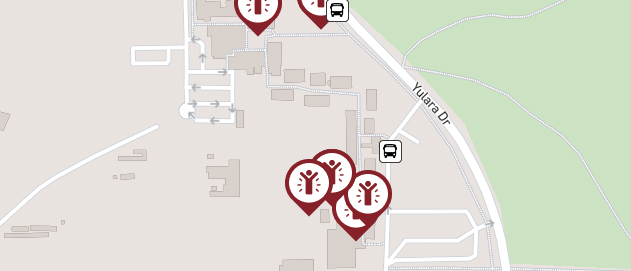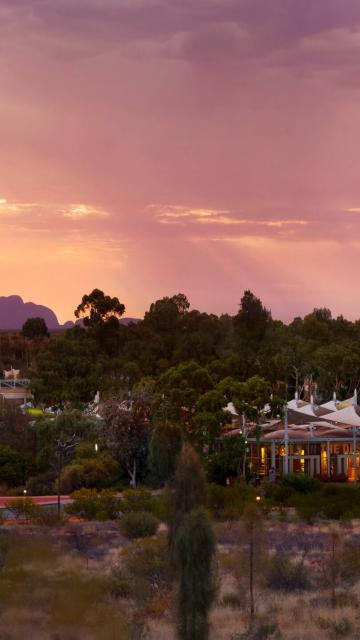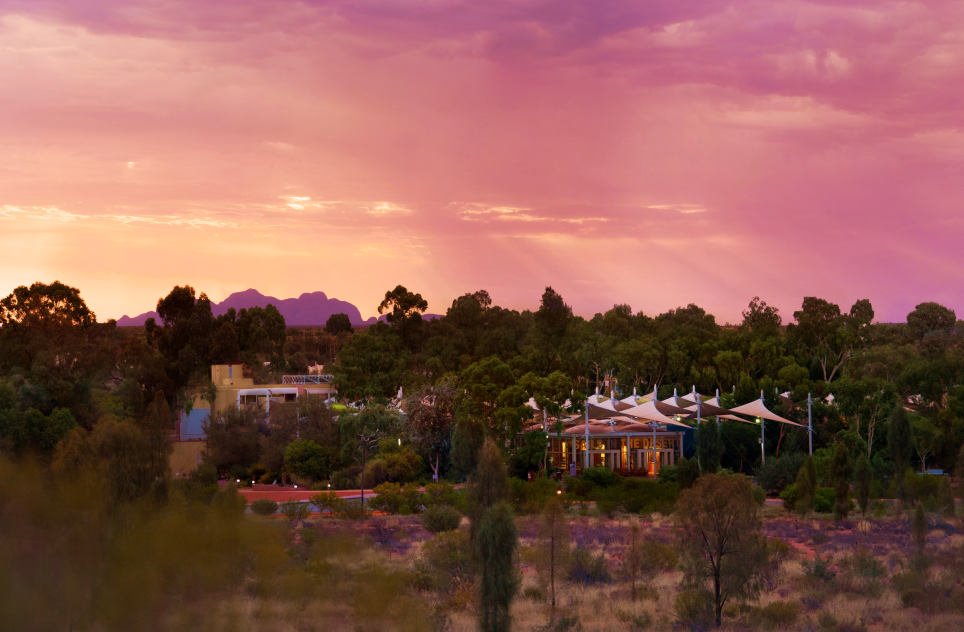Ronnie Allen is a senior Pitjantjatjara man from the Northern Territory community of Kaltukatjara (Docker River). He is known for experimenting with variations of traditional forms of carving and his work has been exhibited in the prestigious SOFA exhibition in Chicago, USA. His work has also been represented in the Museum of South Australia in Adelaide. Ronnie also received recognition as a painter in 2008.
Paintings depict the Tjukurpa, the Law and stories of Ancestors. Anangu (Central and Western Desert Aboriginal people) have responsibilities for the protection and teaching of different Tjukurpa and there are strict protocols for the imparting of knowledge. The dotting technique has evolved with the need to adapt sacred expressions of Tjukurpa for public viewing and as a depiction of the desert landscape.
Ronnie has depicted a place called Ngalyi, a rock hole site near Kunpula outstation, south of Kaltukatjara in the Petermann Ranges. Travelling through this site from Western Australia is Tjukurpa significant for parka-parka, ngyanytja or mistletoe berries. The edible fruit are like tiny red jewels growing on plants that attached themselves to the branches of the quandong and mulga trees. They are important food for emus as well as the Anangu.
As with all living things, parka-parka has its associations with the Tjukurpa, the Creation Ancestors and the activities which shaped the land, the people and their law.
© Ronnie Allen, Parka-Parka, 2008




































